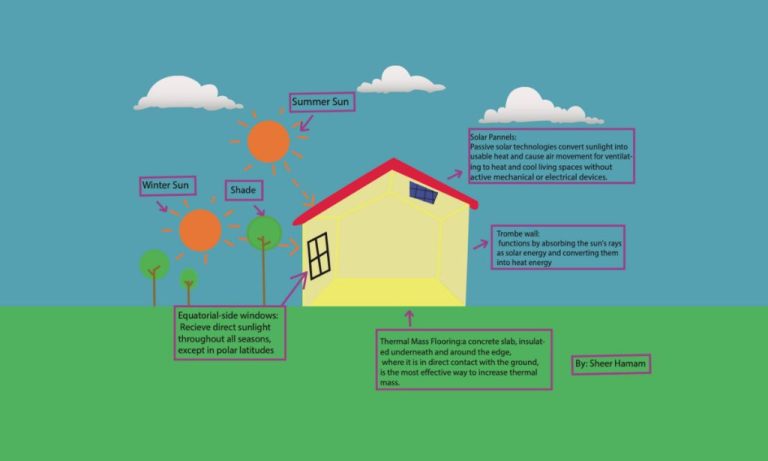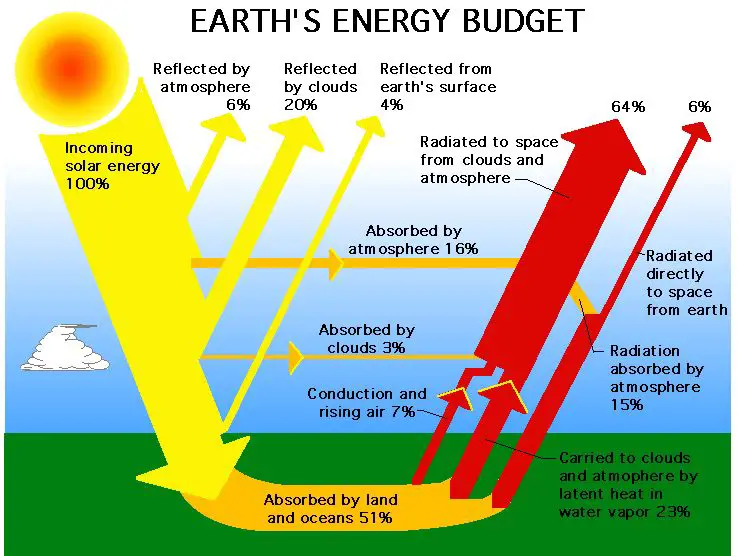What Is The New Solar Panel Technology In 2024?
Solar panel technology has come a long way since its inception in the 1950s. Early solar cells were expensive and inefficient, converting only about 6% of sunlight into electricity. Through investments in research and manufacturing improvements, solar panels have become much more affordable and efficient over the past few decades. Today’s typical solar panels convert 15-22% of sunlight into electricity.
Continued advances in solar technology are critical for further reducing costs and increasing adoption. New developments in materials, efficiency, manufacturing techniques, design, and applications are enabling solar power to compete with fossil fuels across more sectors. The innovations emerging in 2024 promise to accelerate the growth of solar worldwide.
This article will provide an overview of the most important solar panel technology trends as of 2024. These new advances are making solar more efficient, affordable, appealing, and accessible than ever before. With the rapid pace of innovation, solar power is poised to become one of the world’s leading sources of renewable energy.
New Materials
New materials are enabling major improvements in solar cell efficiency and cost. One of the most promising is perovskite solar cells. As described in this 2024 article, combining perovskites with traditional silicon solar cells in tandem configurations can enable efficiencies above 30%, a major jump from traditional silicon alone. Perovskites have seen rapid efficiency gains in recent years due to their strong light absorption and charge transport properties. Companies like Oxford PV are now commercializing perovskite-silicon tandem solar panels.
Organic photovoltaics (OPV), using carbon-based materials like plastics and inks, are also gaining traction. Their flexible, lightweight nature makes them suitable for creative solar applications on fabric, vehicles, and buildings. While efficiencies and durability remain challenges, companies like Heliatek are bringing OPV solutions to market.
On the thin-film front, newer materials like cadmium telluride (CdTe) and copper indium gallium selenide (CIGS) are enabling thin, lightweight solar panels ideal for rooftops. Improvements in thin-film efficiency and manufacturing are helping drive down costs further. CdTe leader First Solar achieved 22.1% cell efficiency in 2024. CIGS developers like Solyndra emerged but later went bankrupt; technology from their work was acquired and further developed by companies like Solar Frontier.
Increased Efficiency
Current commercially available solar panels for residential use have average efficiencies between 15-22%. However, new technologies are pushing efficiencies higher. Researchers at the University of New South Wales set a world record in 2020 by developing a solar panel with 25% efficiency in the lab (https://www.reportlinker.com/plpcluster/6347364). Perovskite solar cells in development have shown remarkable efficiency improvements in recent years, now reaching over 25% efficiency in lab tests.

Higher efficiency solar panels mean that more electricity can be produced from the same amount of sunlight. So for a given solar installation, higher efficiency panels will generate more power. This reduces the number of panels needed to meet energy demands, lowering installation costs. More efficient solar panels will help make solar power even more cost competitive with fossil fuels.
Improved Manufacturing
Advances in manufacturing techniques have significantly reduced the costs of producing solar panels while also enabling faster production speeds and less material waste. New automated production lines are streamlining solar cell fabrication and panel assembly. Robotic arms can precisely position solar cells and interconnect ribbons to construct each panel, achieving higher quality control and faster throughput (source).
Manufacturers have implemented lean manufacturing principles to minimize waste at every step. Recycling solar panel components for reuse has also cut down on the raw materials needed. Newer solar panel designs enable the use of fewer materials overall, further reducing input costs. Combined with economies of scale as production expands, average solar panel pricing has steadily declined.
Innovations in manufacturing technology have enabled mass production of higher efficiency solar panels at increasingly affordable prices. With faster and more efficient fabrication methods resulting in cheaper panels with less waste, solar energy continues on a trajectory to outcompete fossil fuel energy sources.
Novel Designs
In addition to increased efficiency, solar panel manufacturers are innovating on the design and aesthetics of panels. One key area is the development of solar shingles that seamlessly integrate with roofing. Companies like Tesla offer solar shingles that look and function like regular asphalt roof shingles but also generate solar energy. These provide a sleek, integrated look rather than bulky panels on top of the roof.Solar Panels Aesthetics and Design Innovations – Energy5
Another design innovation is solar windows that have transparent solar cells integrated into the glass. Companies like Ubiquitous Energy are developing solar windows that can generate electricity from natural light while still maintaining visibility. This allows for solar generation on glass surfaces like building facades and skylights.
Flexible solar panels are also an area of focus, creating lightweight panels that can adapt to curved surfaces like car roofs or tents. Flexible panels expand the potential applications for solar generation. Companies like Sunflare are developing flexible solar panels using new CIGS semiconductor technology and polymer substrates.Innovations in Solar Panel Design and Aesthetics – Energy5
Storage Integration
The future of solar panels will increasingly integrate energy storage solutions like batteries to allow for continued use of solar energy even when the sun isn’t shining. According to this article, solar and storage integration will become standard, with solar installed in tandem with batteries. This allows the storage of excess solar energy for later use.
Solar+storage systems will also enable the creation of microgrids – small-scale power grids that can disconnect from the traditional grid and operate autonomously using solar and batteries. Microgrids with solar and storage integration provide resilience and reliability. According to this article, microgrids are becoming increasingly popular to serve communities and businesses.
Integrating storage also helps reduce the intermittency issues of solar panels, which only produce power when the sun is shining. With batteries to store excess solar energy, power can be discharged in the evening or on cloudy days. This makes solar power production more stable and reliable.
Smart Panels
SolarEdge and other solar companies have developed smart solar panels with embedded electronics that enable advanced functions and connectivity. These smart panels have built-in power optimizers, sensors and wireless transmitters to optimize energy production.
Smart panels provide real-time performance monitoring, which allows homeowners to track energy generation through a monitoring portal or mobile app. The panels can send alerts for underperformance or faults. They can also enable automated adjustments to maximize solar energy capture in changing conditions, such as partial shade or clouds passing overhead.
By leveraging embedded electronics and wireless connectivity, smart solar panels aim to simplify solar system design, improve energy yield, reduce operations and maintenance costs, and enhance the value proposition for homeowners. Key features include panel-level monitoring, automated system adjustments, easy installation and superior reliability.
Expanded Applications
In 2024, solar technology will expand into exciting new areas beyond traditional solar panels on rooftops. Three key areas of expansion will be in space technology, wearable devices, and agriculture.
In space technology, scientists continue to develop thinner, lighter, and more flexible solar panels to power satellites and spacecraft. These new materials allow solar panels to be tightly rolled up for launch and then unfurl in space. Space solar is projected to grow in 2024 as more private space companies launch missions.
Wearable solar devices will also see major advances by integrating solar cells into clothing, backpacks, watches, and more. These portable solar generators will allow people to charge their electronics on-the-go without being tied to an outlet. Companies are innovating with solar fabrics and miniaturized flexible panels.
Solar power will expand heavily into agriculture in 2024. Greenhouses, farms, and vineyards will increasingly adopt solar technology to offset electricity costs and power agricultural tech like sensors and automation. Small-scale solar will also help power water pumps and irrigation in rural farming areas.
Overall, solar is poised to spread into exciting new applications beyond the electric grid. From powering spacecraft to watches, solar tech innovations will pop up in everyday life in 2024.
Environmental Impact
The environmental impact of solar panels has improved in recent years due to advances in manufacturing and recycling processes. According to a 2019 lifecycle analysis by the National Renewable Energy Laboratory [1], the greenhouse gas emissions from manufacturing solar panels have decreased by over 90% since 1975. The analysis found that solar panels now produce “extremely low emissions” over their lifespan compared to other energy sources.
Manufacturing solar panels is becoming cleaner thanks to the use of more energy-efficient production techniques and the sourcing of raw materials from environmentally-responsible suppliers. For example, First Solar, one of the largest manufacturers, uses a cadmium telluride thin film technology that requires less energy and semiconductor material than traditional crystalline silicon solar panels [2].
Recycling of solar panels at end-of-life has also greatly reduced their environmental footprint. Most manufacturers now operate recycling programs to recover valuable materials like silver and aluminum from old panels. By 2025, one projection estimates that 80% of solar panels will be recycled rather than sent to landfills [3]. Proper disposal and recycling is key to minimizing waste and enabling a circular production system.
Overall, lifecycle analyses consistently show that the environmental benefits of solar energy far outweigh the impacts of manufacturing and recycling panels. With continued improvements, solar power represents one of the most sustainable options for renewable energy.
Conclusion
In summary, the key innovations in solar panel technology in 2024 include advances in materials, efficiency, manufacturing, integration, and design. New high-efficiency materials like perovskites allow panels to absorb more sunlight. Average panel efficiencies now exceed 30%, with some panels reaching over 40%. Improvements in manufacturing techniques have driven down costs, while novel designs like flexible thin-film panels expand potential applications. Smart panels with built-in storage provide on-demand power anytime. Overall, these advances have greatly increased solar’s capacity to generate abundant clean electricity worldwide.
The future outlook for solar is very bright. With costs continuing to fall and efficiency rising, solar energy is poised for massive growth globally. Renewable energy targets and climate change concerns will further accelerate adoption. Innovations like solar paint, solar windows and solar roads could mainstream solar integration in infrastructure and devices. Within the next decade, solar could supply over 20% of global electricity needs and up to 50% by 2050. Solar power’s potential is enormous thanks to the remarkable new technologies emerging today.
These advances in solar panel technology hold tremendous importance for building a sustainable energy future. By harnessing the limitless power of the sun more efficiently and cost-effectively than ever, new solar innovations help tackle climate change, reduce reliance on fossil fuels, improve energy access and advance human progress.






